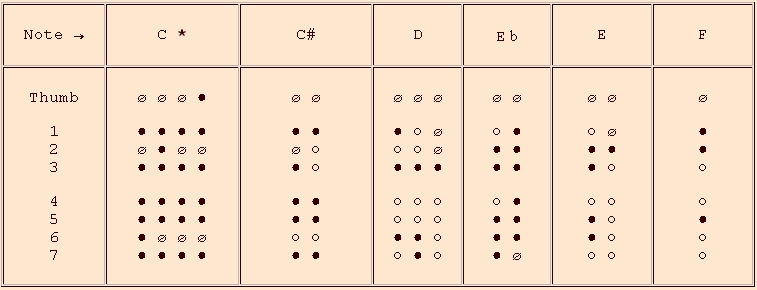
One of the biggest hurdles when learning any new skill is the motivation of the student. When they ask why, I reply “That is when your hands will be big enough to hold it, and your brain will be responsible enough not to lose it.” Since I have my students begin playing recorder in January of their third grade year, I can already tell my current kindergarteners that they will get their very own recorder in January of 2022.

My kindergarteners inevitably ask me if they can play my recorder, and that’s when I have the chance to explain to them about germs. From the very first day, the recorder is a source of positive musical experiences.
#FIRST NOTE RECORDER HOW TO#
By creating jumping sounds or playing “in slow motion,” I not only expose my students to the entire range of recorder sounds, but also teach students how to respond physically and expressively to musical cues. Once my students can stop with me, I change my sound. As the kindergarteners realize that we are now playing a “game,” they begin to giggle. This generally causes my students to also stop. I match the tempo of their feet, and then suddenly I stop playing and freeze.

As they walk in, awed by my shelves bursting with instruments, they follow me while I play my recorder. My students first experience the recorder on the very first day of kindergarten music. Before they pick up their instrument for the first time, their mind, hands, fingers, tongue, and air support need to be in place.

In truth, a students’ journey must begin far before they even touch a recorder. One can begin on A and high C, B-A-G, or even E-D-C. There are many different methods of beginning a student’s journey on the recorder. I went back to the drawing board and, after four years of tweaking, I developed the following strategy to help my students have the best beginning Where to Begin? Due to budget cuts, my schedule changed to a six-day rotation, and I found my students and myself struggling with the recorder. While the first few classes were not the best-sounding classes, soon my students were able to play independently and well. When I began teaching recorder, I saw my students every other day. I found that the recorder was a tool of great pedagogical power, a tool that could teach my students how to improvise, read, and compose a melody. Then, I began my Orff Schulwerk journey and found the recorder, and the rest is history. I grew up as a clarinetist, but developed jaw problems and had to quit woodwinds forever – or so I thought. The very first time I picked up a recorder, I fell deeply in love with this sweet instrument. This way, everyone eventually gets a chance to challenge you, and you can secretly assess them as they do.Get your students making music the first day they play!

You can work this into your daily warmup by limiting it to a certain number of students each day. The volunteer student will play a four-beat pattern (improvised or familiar), and you have to echo it back without any mistakes.


 0 kommentar(er)
0 kommentar(er)
